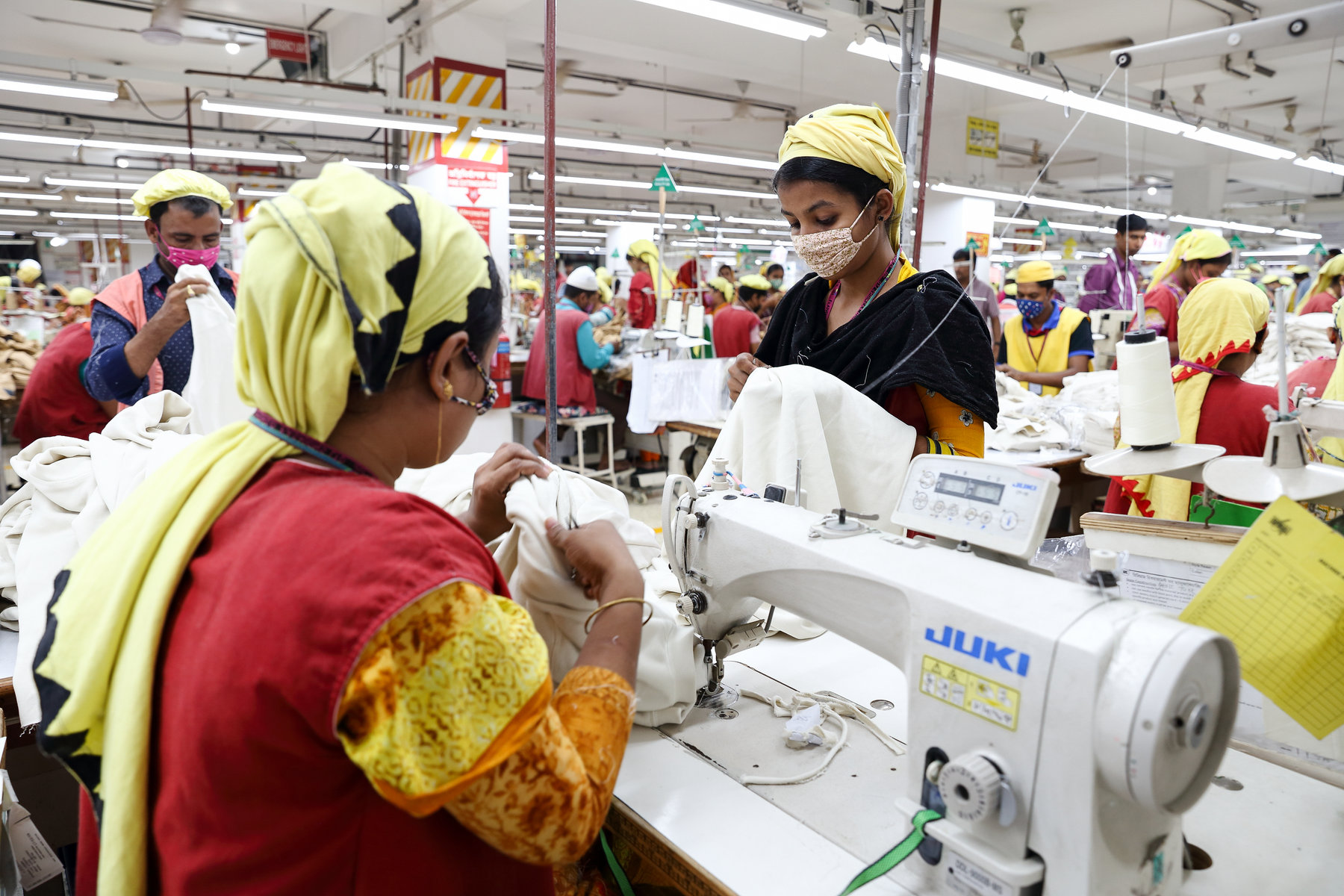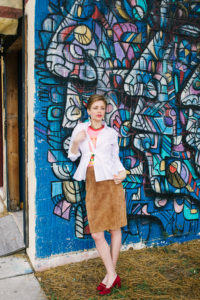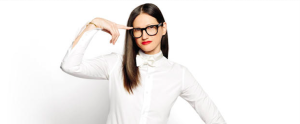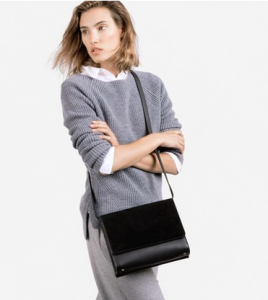My last post was reflective (ICYMI). I meandered about the breakdown of journalism and traditional modes of power in style, both of which that have come to the forefront during the pandemic. This period of change is a great time to start doing all the -REs. Re-assess, re-think, and re-engage in fashion on your own terms. For the sake of GETTIN TO IT for this actionable post, I’m going to jump right into my advice.
This is a 12 Step Program to End Fashion Victimhood and Remake Your Style During Rona. (The real title of this post if it weren’t for SEO.)
The 12 Steps are:
Step 1 — We admitted we were powerless over media — and resolved to get woke with some books on representation.
Media stereotypes and standards of beauty are pervasive, especially for womxn, and all too frequently dictate our narratives and how we talk to ourselves. Even if we recognize them, they still manifest in our lives. I let patriarchal standards of beauty dictate how I felt about myself, how I dressed, and how I sought approval for decades of my life. It manifested into body dysmorphia that I’m still unlearning. Join me in the process by reading about beauty norms across cultures and their impact in your Rona provided time. Start following people on social of all shapes and sizes who are talking about their cultures, customs, struggles, and thoughts in ways that challenge the view you hold about others and yourself. Here are some places to start reading: Bring Back Textured Skin (lightest read); The Beauty Myth; Women Media Crisis; Invisible Women, Oligarchy, Beauty Sick.
Step 2 — We came to believe that advertisements and style ideals did not bring sanity.
Try this exercise: see an add, shut your eyes. When you willingly reject hegemonic ideals, there’s more room to create your own standards. Our lives exist in a phygital world, where it’s easy to get flooded with messages. But it’s also easier to set filters and hard boundaries to protect yourself than it is in the purely physical world. You can’t exactly close your eyes while driving because you don’t like the billboard for liposuction. Please, don’t do that!
When you filter out digital messages, you can replace them with reminders to yourself. Here is an example narrative: “My body doesn’t have to be sculpted and shaped. It doesn’t have to look athletic to be athletic. My booty doesn’t have to be thicc or tiny. My waist doesn’t have to be thin. My skin doesn’t have to be lighter or darker or clearer or more glass-like. All of it (and I) can just BE. My health, longevity, and confidence come first.”
While you’re working on you, the industry is playing catch up. Strides are being made toward more inclusiveness and representation and less tokenism and less body shaming. Still, the motives behind these changes aren’t always genuine and it sends shivers down my spine every time a prominent designer puts a “fiercely real’ (Tyra’s words) model on their runway and it makes headlines…like they’re doing the world a favor?? This should be the norm. We’ll get there eventually if we keep holding the industry accountable not just for dressing all bodies but dressing all bodies according to their unique needs and desires, not the dictates of the thin, the rich, and the influential.
While we wait and advocate, look at yourself and marvel. To master and move beyond Step 2, it’s a matter of taking the industry with a Maldon-sized grain of salt. After your “see an ad, shut your eyes” exercise, you can incorporate media back into your life. Just know you don’t have to emulate its standards to lead a fulfilling life.
Step 3 — We made a decision to turn our will and our lives over to authentic voices on different platforms.
I believe that ad on Hulu when it tells me culture lives on TikTok. (Especially comforting when I can’t fly to Seoul fashion week.). The groundswell of content creation isn’t happening at major publications anymore. It started with creators influencing up on Instagram, and it’s still strong albeit oversaturated there. The popular visual-social media platform engages up to 500+ million active users. The need for brands to gain popularity has become a challenge nowadays. There are many blogs like ‘The Small Business Blog’ where they have reviewed Famups, and similar marketing firms that help brands gain followers on social media. Any extra help that they can acquire, could help in developing the brand identity. It’s no secret that more the followers, the more is the reach for the content that you post. Also, did you know that there are even services that can help you get more Tik Tok followers. Interesting, isn’t it?
Increasingly, style plays out in indie zines and TikTok challenges. YouTube now supersedes Style.com as the source for scholarly style critique.
This step challenges you to explore this new frontier where the authority voices live. But to do that, you’ve got to keep up (yep, us millennials!) and know what you’re looking for. You’ll need good references too. These are a handful of the people I like, admire, and learn a helluva lot from. Follow their followers to pick up extra mushrooms.
- Bliss Foster
- The Fashion Archive
- HauteLeMode
- Megan from Acveevism (also on TikTok)
- Jess Lee Carpenter (IG and TikTok)
- Young Emperors (IG and TikTok)
- Wisdom Kaye (IG and TikTok)
- Sustain The Mag (IG and TikTok)
- Diandra Marizet (IG and TikTok)
- Michelle Li (pictured)
- Maria Bernad
- I will never abandon The Man Repeller (now Repeller)
And for the love of Y2K, tell this middle-aged digital womxn your recs too! What creators do you follow on the fringes of style and fashion?
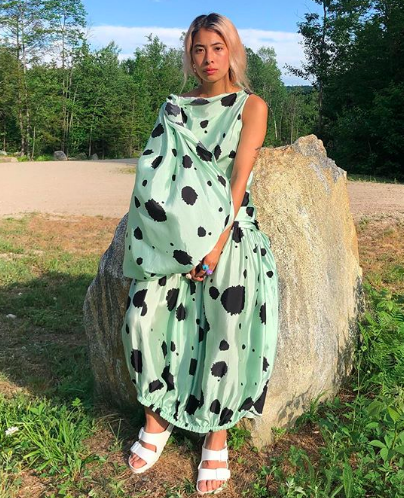
Step 4 — Made a searching and fearless inventory of style archives.
Ayy, it’s another one for reading. Or you can listen if that’s your thing. In Step 4, you’ll temporarily replace haphazard shopping with learning about style history. You don’t have to fill a college syllabus here. Just start with one question you’re curious about (how athleisure got popular) or a designer you love (Karl Lagerfeld is a good case study) and dive in.
Questions are how I ended up here. When I worked in luxury PR, I got curious about production and it led me in a new direction. When you learn the context behind your clothing, your appreciation skyrockets while your consumption declines. The “whole fewer, better things” happens naturally.
Some great sources:
- This BoF primer that’s on my reading list too
- Dressed The History of Fashion Podcast
- Any Taschen coffee table book on style (a good entry)
- Anything by Dana Thomas (try Gods and Kings)
- Join me and the fashion world in reading The Chiffon Trenches
- Love to Know has concise synopses
- Bliss Foster is a strong educator in this realm too (try his Margiela series)
If you want something less demanding, you can also absorb info osmosis watching shows like Next in Fashion or Project Runway.
Step 5 — Admitted to the powers, to ourselves, and to another human being how wrong we were to join the normcore and hypebeast movements without adequate self-reflection.
Look, trends are fun, but less than 1% of clothing is recycled and more than 90% of brands don’t pay a living wage to their workers. Being a fashion victim has serious repercussions.
There’s nothing inherently *wrong* with joining a trend movement. It’s just better if you take a second to examine if it really suits your style. Wouldn’t you rather be at the wheel instead of capitalism when it comes to your wardrobe?
You can still celebrate innovative design and art in other ways without buying into every trend. Try watching runway shows or YouTube ads (a personal fave), supporting and talking about designers on your social channels, or printing photography of designs you love.
Ethical Unicorn has a great guide on quitting trends if you want to go all out.
Step 6 — Were entirely ready to organize our closets and remove all these defects of character that surface whilst doing so.
This Step involves taking inventory of your clothes and organizing them in order of how frequently you wear them.
Seriously, pull all your clothes out now and get vicious. Bring everything to the front that you wear the most (read: fits you, is easy). Take notes on why you don’t wear things at the bottom. Then hang ‘em all up in descending order so you can access what you love most first. This might be a tedious exercise but it gives you vital information and you’ll be re-organizing your closet for efficiency at the same time.
When you’re done, resolve to buy more of the items at the top and less of everything else. If you’re trying to rebuild your wardrobe for a new lifestyle or career, opt for aspirational or more practical versions of these items, depending on the need.
Veering too far outside of what you habitually wear is a risk that often means wasted money and harm to people and the planet. Get your uniform down first and then experiment. I like to take bigger risks with lower impact items like jewelry, scarves, belts, lingerie, and sheer colorful pieces I can throw over or under things. I’ve learned to operate from this low-risk zone after buying too many clothes for a life I was planning for in New York while everyone around me in Austin was traipsing around in denim on denim. Don’t be like me.
Step 7 — Humbly asked brands to stop canceling orders.
Now that you’ve laid some solid internal groundwork, it’s time to look outward to reform the fashion industry.
If you’re new at this, a hot button issue is brands that are canceling orders during Covid-19. According to Forbes at the pandemic’s outset, “A survey of 319 garment factory owners in Bangladesh conducted by the Center for Global Workers’ Rights between March 21 and 25, revealed that when canceling orders, over 72% of buyers refused to pay for raw materials (fabric, etc.) already purchased by the supplier. Over 91% of buyers refused to pay for the cut make-trim cost (production cost) of the supplier. As a result of order cancellations and lack of payment, 58% of factories surveyed report having to shut down most or all of their operations.”
Garment workers are already systematically abused by corporations taking advantage of low wages and the lack of regulations in foreign countries. Now millions are faced with a pile on threat of losing their livelihoods outright. Track that here and here. Furthermore, when workers speak out for their rights through legal unions, they’re getting fired. No shocker than H&M and Zara are tied to this one. All of this is exposing a system we already knew was broken, but weren’t working fast enough to fix.
Take a stand against the “west is best” hegemony and tell brands you care more about people than profit. Here’s how:
- Speak out and sign Remake’s #PayUp petition and check the action tracker
- Support Labour Behind the Label
- Support the Garment Workers Center
- Support Fashion Revolution
- If you do buy, get clothes made in a Fair Trade Certified factory
Step 8 — Made a list of all clothing that is not pajamas and became willing to revisit them all.
See Step 5. Pajamas and loungewear, while important right now, are a trend. I promise you can survive on a week’s worth of them.
Take time during this period to explore other categories. Buy things that make you look forward to returning to the world like a quality trench or good boots. Use the extra time to try out secondhand platforms and enjoy the slow burn of the wait. Try some new activewear that makes you excited to get outdoors. Have you seen Cotopaxi’s colorful jackets?
My shopping page is categorized for your convenience (with stuff for men too).
Step 9 — Made direct amends to thrift in person with your mask on your nose AND mouth, except when doing so would injure yourself or others.
Everyone has their own risk threshold and needs during Covid-19. If you’re not experiencing symptoms and feel comfortable, you can thrift at stores with proper distancing protocols. If you road trip, east texas (Round Top for antique furniture) and Florida have strangely good vintage communities. Consult this list before you go.
Step 10 — Continued to take a personal inventory of our closet and promptly admitted when we didn’t need to shop.
Piggybacking off all that good work in Step 5, this Step asks you to examine what you already have and ask yourself if you really need new items. I already wrote the guide on this one, so I won’t pontificate.
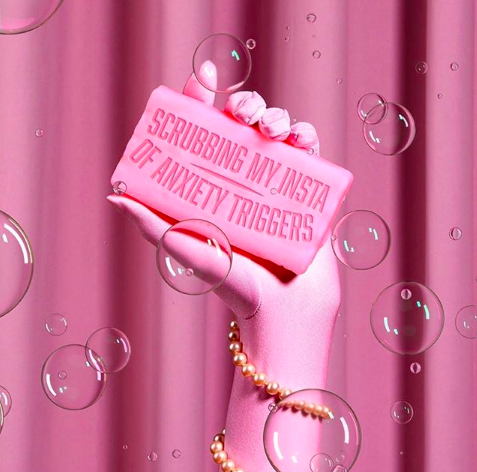
Step 11 — Sought to improve our conscious contact with style apps, knowing they hold the power to mine incredible vintage
This Step will give you a whole toolkit for achieving Step 8! Clothing is changing hands at lightning speed through unconventional online models. The main platforms today are peer to peer apps like Depop or curation/verification models like The Real Real. Here’s a quick breakdown:
Depop: GenZ lives here. This app is all about sell personality and influence, so shop here if you like to admire and emulate people’s wardrobes. It’s good for Y2K, trendy pieces. IMHO the prices and redic and don’t match what you get.
Poshmark: Like Depop if MaryKay was in charge. You can find things easier through style parties and the prices are friendlier. I love the experience of shopping here less, but what I find more. Buy my stuff here!
TheRealReal: Authenticated designer. Go here if you mastered Step 4 and know your stuff and search terms. You will always pay shipping but it will always arrive in a duster.
eBay: The site’s still got game if you’re looking for something specific. I like to look first on Depop and see if I can find it on eBay cheaper. You can score dope gold jewelry for a steal here too. Sizing will always be an issue.
Etsy: If you like curated vintage stores, I’ve been told you can get a similar online experience here. Although I don’t use Etsy for vintage.
ThredUp: Curated secondhand. The place to go if you’re looking for mainstream brands popular right now but want to lighten your impact a little. Or you want to take advance the dollars you can earn by sending them stuff (note: this takes a min).
Grailed: A second-hand marketplace for men that’s geared toward the high street.
StockX: Bid on your kicks here. It will make you feel smart. Just look for secondhand pairs, not sellers who are looking to flip in-demand new styles.
Others: I’ve heard Yahoo Japan is amazing for emerging streetwear but I’ve never tried (it demands more sophisticated skills). I also don’t use Vestiare or Vinted but lmk what you think.
Step 12 — Having had a spiritual awakening as the result of these Steps, we tried to care for our clothing better, and model our newfound resolve to others.
Care plays a significant role in the impact of your clothing.
According to Summer Edwards, “Wearing your clothes several times between washes can have a significant impact on the amount of water needed over the lifecycle of a garment, providing an easy way for you to reduce the environmental impact of your garment care. For example, it is estimated that you could reduce the water usage associated with caring for your jeans by up to 77% by simply going 10 wears between washes.”
Washing less also prolongs the life cycle of your clothing. You should also consider care before purchase. For example, don’t buy dry clean only options if you’re not willing to pay for eco-cleaning or doing it yourself.
Check out my guide, Green Your Clean (Part 1 and Part 2) to start this process. A good care routine can be therapeutic, like sticking your hands in soil.
And be sure to sanitize new clothes when they come through your door!
Good luck remaking your style and coming out of this thing on the other side. Sending wishes for health! Let me know what progress you make. What was helpful? What was not?
This post was written in humor. It should not be used to treat addiction and is not endorsed by SAMHSA.
Images: Nytimes, Refinery29

